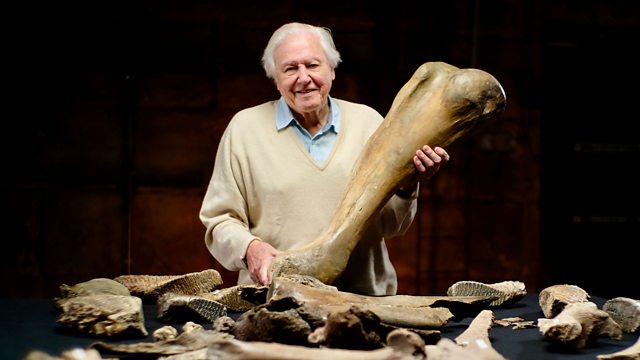Attenborough and the Mammoth Graveyard: Sir David Attenborough joins an archaeological dig uncovering Britain’s biggest mammoth discovery in almost 20 years. In 2017, in a gravel quarry near Swindon, two amateur fossil hunters found an extraordinary cache of Ice Age mammoth remains and a stone hand-axe made by a Neanderthal.
Professor Ben Garrod joins the team at DigVentures during the excavation as they try to discover why the mammoths were here and how they died. Could the Neanderthals have killed these Ice Age giants? The remains of at least five Ice Age mammoths, including two adults, two juveniles, and one infant were discovered, with a number of stone tools made by Neanderthals found nearby.
The discovery was initially made by amateur fossil hunters, Sally and Neville Hollingworth, who were given permission by Hills to explore the area. Realising the significance of their find, additional resources were brought in to tackle this important discovery.
Attenborough and the Mammoth Graveyard
David Attenborough
Sir David Frederick Attenborough is an English broadcaster, natural historian and author. He is best known for writing and presenting, in conjunction with the BBC Natural History Unit, the nine natural history documentary series forming the Life collection, a comprehensive survey of animal and plant life on Earth.
Attenborough was a senior manager at the BBC, having served as controller of BBC Two and director of programming for BBC Television in the 1960s and 1970s. His filmography as writer, presenter and narrator spans eight decades; it includes Zoo Quest, Natural World, Wildlife on One, the Planet Earth franchise, The Blue Planet and its sequel. He is the only person to have won BAFTAs in all of the categories black and white, colour, high-definition, 3D and 4K resolutions.
While Attenborough’s earlier work focused more on the wonders of the natural world, his later work has been more vocal in support of environmental causes. He has advocated for restoring planetary biodiversity, limiting population growth, renewable energy, mitigating climate change, reducing meat consumption, and setting aside more areas for natural preservation.
On his broadcasting and passion for nature, NPR stated he “roamed the globe and shared his discoveries and enthusiasms with his patented semi-whisper way of narrating”. In 2018 and 2019, Attenborough received Primetime Emmy Awards for Outstanding Narrator. He is widely considered a national treasure in the UK, although he himself does not like the term. He is the younger brother of the late director, producer and actor Richard Attenborough, and older brother of the late motor executive John Attenborough.
Mammoth
A mammoth is any species of the extinct elephantid genus Mammuthus, one of the many genera that make up the order of trunked mammals called proboscideans. The various species of mammoth were commonly equipped with long, curved tusks and, in northern species, a covering of long hair. They lived from the Pliocene epoch (from around 5 million years ago) into the Holocene at about 4,000 years ago, and various species existed in Africa, Europe, Asia, and North America. They were members of the family Elephantidae, which also contains the two genera of modern elephants and their ancestors. Mammoths are more closely related to living Asian elephants than African Elephants.
The oldest representative of Mammuthus, the South African mammoth (M. subplanifrons), appeared around 5 million years ago during the early Pliocene in what is now southern and eastern Africa. Descendant species of these mammoths moved north and continued to propagate into numerous subsequent species, eventually covering most of Eurasia before extending into the Americas at least 600,000 years ago. The last species to emerge, the woolly mammoth (M. primigenius), developed about 400,000 years ago in East Asia, with some surviving on Russia’s Wrangel Island in the Arctic Ocean until as recently as roughly 3,700 to 4,000 years ago, still extant during the construction of the Great Pyramid of ancient Egypt.




